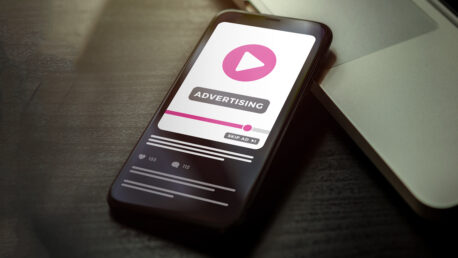
Breaking Barriers: Transitioning Distribution from Satellite to IP
We all know in our heart of hearts that satellite is a dated method of video distribution. While efficient, its mass approach of transmitting generic content that not all affiliates or virtual MVPDs might want, has a high-cost barrier, limits affiliate personalisation, and is expensive for anything other than mass delivery to thousands of receive endpoints.
Read More
It’s Time to Upgrade: Unleash the Power of vDCM, the Future-Proof Digital Content Manager!
For over 20 years, DCM has been a reliable tool for video processing and distribution. Now, it's time to upgrade to vDCM, a next-generation Digital Content Manager that offers superior efficiency, advanced features, and future-proof technology. Learn about the 10 compelling reasons to make the switch today.
Read More
Revolutionizing cDVR – slash cDVR operational costs
Synamedia, in collaboration with Amazon Web Services (AWS), offers a scalable and cost-effective cDVR solution. By leveraging cloud infrastructure, innovative storage tiering, and intelligent data transfer algorithms, Synamedia's solution reduces total cost of ownership (TCO) by up to 95% without compromising performance.
Read More
How a new recommendations engine led to gold with a 30% lift in conversion rates
In this Olympic year, I've been pondering the striking parallels between Olympic success and the vital role of pay TV operators in delivering content their subscribers desire (no judgment, please). Much like athletes' dedication to excellence in a fiercely competitive environment, pay TV operators must provide uncompromised, tailored content in their own competitive environment.
Read More
Beyond Broadcast: New approaches for localised digital advertising
Since the advent of Broadcast TV, a premium has been put on the programs able to attract the largest live audiences. A combination of a compelling matchup between the Chiefs and the 49ers, a highly anticipated halftime concert from music icon Usher, and swarms of dedicated Swifties resulted in Super Bowl LVIII being the largest […]
Read More
Reflecting on the Super Bowl: Navigating the Sports Streaming Landscape
As the confetti settles for the Kansas City Chiefs and San Francisco 49’ers after a riveting 2024 Super Bowl, the sports streaming industry is doing a self-assessment. With 123.7M total viewers watching the big game across various streamers and CBS broadcast – it’s clear viewers prefer more options. But is the technology keeping up with […]
Read More
Going beyond the fundamentals of SSAI
If you’re in the business of TV advertising, you’ve probably seen the rapid growth of the Addressable TV Advertising market over the past decade. According to a recent report by Ampere Analysis, the Addressable TV Advertising space is projected to become an $87 billion market by 2027. As more and more TV advertisers make the […]
Read More
One-click cloud: Synamedia Quortex SaaS products debut on AWS Marketplace
Who doesn’t love fresh coffee in the morning? But it can be a lot for a coffee connoisseur like myself – weighing the right beans, grinding them, preparing the machine, choosing the right settings, etc. The time investment for that perfect morning “pick me up” can be intensive, especially when caring about preserving the taste […]
Read More
Understanding the fundamentals of SSAI
It is 2024 and we are in the middle of a digital revolution where delivering TV advertisements is increasingly becoming more nuanced, precise, and targeted. For video content owners, publishers and advertisers across the spectrum, Dynamic Ad Insertion (DAI) is going to play a pivotal role in growing their ad business over the coming years. […]
Read More
What’s driving the robust addressable TV market to even greater heights
Addressable TV Advertising, which already accounts for one-sixth of video ad spend according to Ampere Analysis, is on the cusp of a bull run. While “traditional” TV ad revenue is expected to continue to drop, global addressable revenue is growing big time – from a robust $56 billion in 2022 to an estimated $87 billion […]
Read More
Elevating fan engagement with Synamedia’s game-changing In-Stadium Experience
In the ever-evolving landscape of sports entertainment, Synamedia is reshaping the fan experience with its groundbreaking In-Stadium Experience. This immersive solution, designed for fans at home, in the stadium, or on the move, ushers in a new era of sports viewing, seamlessly integrating technology and passion for the ultimate spectator experience. Ultra-low latency and breakthrough […]
Read More
How CTV measurement can be used to boost ad campaign performance
With Connected TV (CTV) dominating living rooms across the world, advertising on it remains one of the most popular marketing channels. Unlike panel-based linear advertising, CTV ad campaigns can be measured more precisely and accurately due to their real-time, connected environment. Moreover, advertisers can also capture additional information such as IP address, device type, timestamp, […]
Read More










